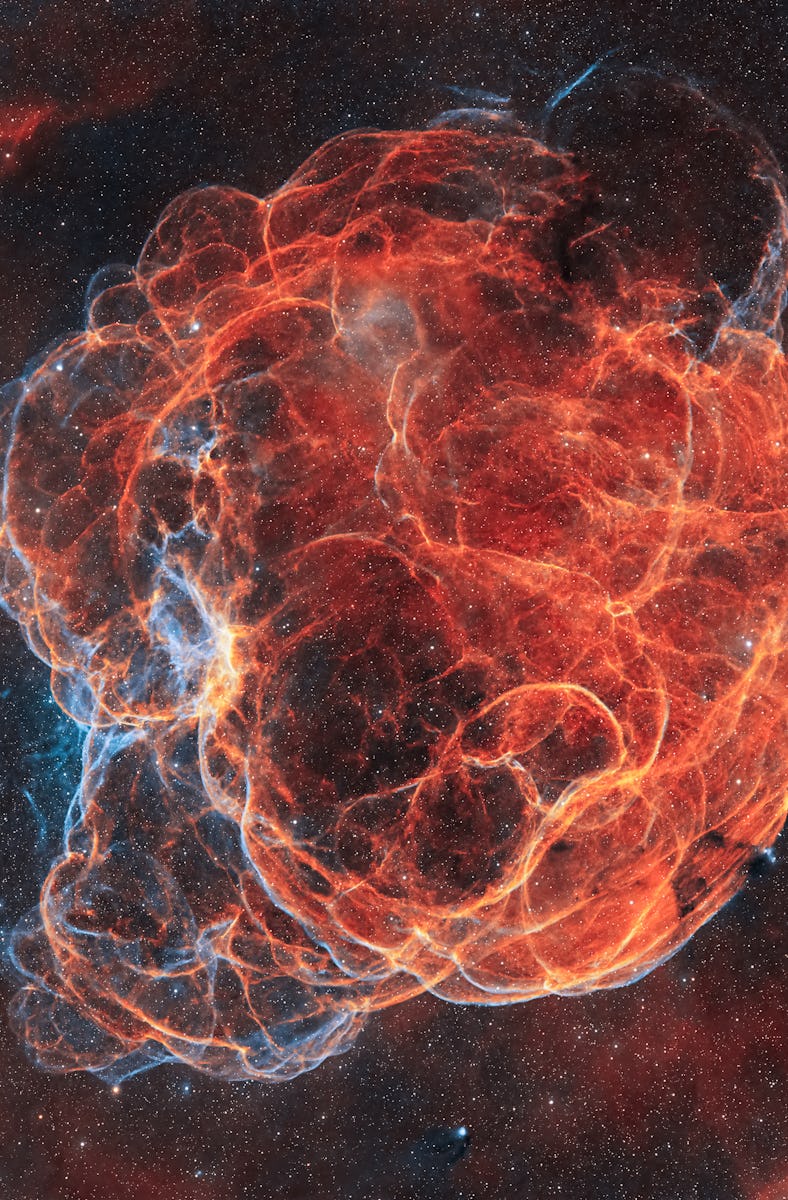Behold The Strange Beauty Of A Tangled Nebula
This is all that's left of a massive star that died 40,000 years ago.

These looping, twisting tendrils of gas are the debris cloud from a tremendous cosmic explosion – an explosion whose light may have been visible to the last Neanderthals on Earth 40,000 years ago.
Today, the bright blazing light of that long-ago explosion has faded, and the Spaghetti Nebula is too dim to see with the unaided eye, despite the fact that it covers a swath of sky six times as wide as a full Moon. Most of the looping filaments of gas that give the nebula its nickname are made of hydrogen, which shows up in red in this image. Blue represents oxygen gas, which would have been among the last elements to be fused deep in the heart of the massive star before its death.
A Cosmic Cataclysm
When the star — unnamed because we’ve only ever known it in its exploded state — reached the end of its nuclear fuel supply, it simply gave up and collapsed under its own tremendous weight. The force of that sudden collapse triggered one of the most powerful explosions in the universe, blasting the star’s outer layers into space. All the intricate tangles of gassy filaments that make up the Spaghetti Nebula used to be packed into a single star, somewhere between 8 and 15 times more massive than our Sun.
Meanwhile, the dead star’s core collapsed into a pulsar: a ball of matter so dense that its atoms have been crushed into smaller particles called neutrons. As this neutron star spins wildly on its axis, its powerful magnetic field funnels charged particles into a pair of jets that blast outward from its poles. Those jets also emit radio waves, which sweep the sky like bizarrely fast lighthouse beams.
The debris cloud from that ancient supernova is still expanding; today, it’s about 150 light years wide. At 3,000 light years away, the brilliant light of the supernova would probably have been visible in the night sky as a strangely bright new star – one which slowly faded away again after a few weeks or months. Astronomers estimate that Semeis 147 is about 40,000 years old, which means the last Neanderthals to walk on Earth might have seen it in their night sky.